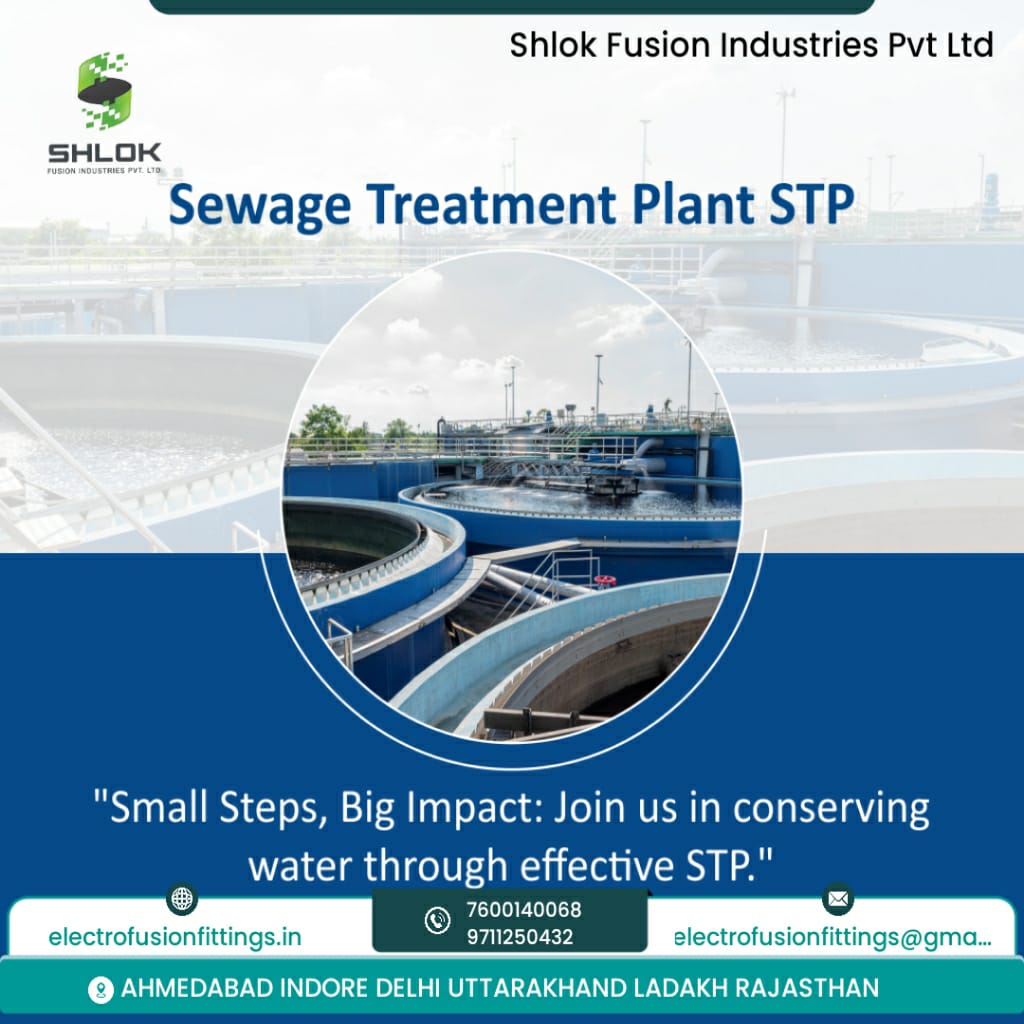STP (Sewage Treatment Plant) systems are crucial for managing wastewater and treating it to protect public health and the environment. Here are some key applications and aspects of STP plants: 1. Residential Areas Purpose: Treats wastewater from households. Benefits: Reduces the risk of contamination of local water sources and helps in recycling water for non-potable uses. 2. Industrial Facilities Purpose: Handles wastewater produced by industrial processes. Benefits: Ensures that industrial effluents are treated to meet environmental regulations and can potentially be reused in the production process. 3. Commercial Complexes Purpose: Manages wastewater from offices, malls, and other commercial establishments. Benefits: Maintains hygiene and cleanliness, and can provide treated water for landscaping and other non-potable uses. 4. Municipal Wastewater Management Purpose: Centralized treatment of sewage from entire towns or cities. Benefits: Efficient management of large volumes of wastewater, reduction of pollution in natural water bodies, and potential recovery of resources such as biogas and treated water. 5. Agricultural Uses Purpose: Treats wastewater for use in irrigation. Benefits: Provides a source of water for crops and reduces the burden on freshwater resources. 6. Recreational Facilities Purpose: Treats wastewater from facilities like swimming pools and resorts. Benefits: Ensures that wastewater is treated before discharge or reuse, maintaining cleanliness and safety standards. 7. Remote or Rural Areas Purpose: Provides a decentralized treatment solution where central sewage systems are not feasible. Benefits: Offers a sustainable solution for wastewater management in areas with limited infrastructure. Key Components of an STP: Screening: Removes large debris and solids. Primary Sedimentation: Settles out solids from the wastewater. Secondary Treatment: Uses biological processes to degrade organic matter. Tertiary Treatment: Provides advanced treatment to remove remaining contaminants. Sludge Treatment: Processes and disposes of the sludge generated during treatment. Emerging Trends: Energy Efficiency: Modern STPs focus on reducing energy consumption and improving efficiency. Resource Recovery: STPs are increasingly designed to recover resources like biogas, nutrients, and treated water for reuse. Decentralized Systems: Small-scale, decentralized STPs are gaining popularity for managing wastewater in remote or developing areas. Implementing an STP is essential for maintaining environmental health, complying with regulations, and making efficient use of resources.
Chat with us on WhatsApp
×
This is your website preview.
Currently it only shows your basic business info. Start adding relevant business details such as description, images and products or services to gain your customers attention by using Boost 360 android app / iOS App / web portal.
https://www.electrofusionfittings.in/latest-update/stp-sewage-treatment-plant-systems-are-crucial-f/90
STP (Sewage Treatment Plant) systems are crucial f...

2024-09-14T06:46:12
STP (Sewage Treatment Plant) systems are crucial for managing wastewater and treating it to protect public health and the environment. Here are some key applications and aspects of STP plants: 1. Residential Areas Purpose: Treats wastewater from households. Benefits: Reduces the risk of contamination of local water sources and helps in recycling water for non-potable uses. 2. Industrial Facilities Purpose: Handles wastewater produced by industrial processes. Benefits: Ensures that industrial effluents are treated to meet environmental regulations and can potentially be reused in the production process. 3. Commercial Complexes Purpose: Manages wastewater from offices, malls, and other commercial establishments. Benefits: Maintains hygiene and cleanliness, and can provide treated water for landscaping and other non-potable uses. 4. Municipal Wastewater Management Purpose: Centralized treatment of sewage from entire towns or cities. Benefits: Efficient management of large volumes of wastewater, reduction of pollution in natural water bodies, and potential recovery of resources such as biogas and treated water. 5. Agricultural Uses Purpose: Treats wastewater for use in irrigation. Benefits: Provides a source of water for crops and reduces the burden on freshwater resources. 6. Recreational Facilities Purpose: Treats wastewater from facilities like swimming pools and resorts. Benefits: Ensures that wastewater is treated before discharge or reuse, maintaining cleanliness and safety standards. 7. Remote or Rural Areas Purpose: Provides a decentralized treatment solution where central sewage systems are not feasible. Benefits: Offers a sustainable solution for wastewater management in areas with limited infrastructure. Key Components of an STP: Screening: Removes large debris and solids. Primary Sedimentation: Settles out solids from the wastewater. Secondary Treatment: Uses biological processes to degrade organic matter. Tertiary Treatment: Provides advanced treatment to remove remaining contaminants. Sludge Treatment: Processes and disposes of the sludge generated during treatment. Emerging Trends: Energy Efficiency: Modern STPs focus on reducing energy consumption and improving efficiency. Resource Recovery: STPs are increasingly designed to recover resources like biogas, nutrients, and treated water for reuse. Decentralized Systems: Small-scale, decentralized STPs are gaining popularity for managing wastewater in remote or developing areas. Implementing an STP is essential for maintaining environmental health, complying with regulations, and making efficient use of resources.
2024-09-14T06:46:12
Keywords
- STP plants
- Rural Areas
- Modern STPs
- large debris
- entire towns
- efficient use
- large volumes
- public health
- organic matter
- Key Components
- swimming pools
- Emerging Trends
- Sludge Treatment
- developing areas
- safety standards
- key applications
- Energy Efficiency
- Residential Areas
- Resource Recovery
- Agricultural Uses
- energy consumption
- potential recovery
- production process
- advanced treatment
- Tertiary Treatment
- Secondary Treatment
- local water sources
- freshwater resources
- biological processes
- industrial processes
- environmental health
- industrial effluents
- Efficient management
- sustainable solution
- Commercial Complexes
- natural water bodies
- Industrial Facilities
- Primary Sedimentation
- Decentralized Systems
- remaining contaminants
- limited infrastructure
- central sewage systems
- Sewage Treatment Plant
- other non-potable uses
- Recreational Facilities
- environmental regulations
- Small-scale, decentralized STPs
- other commercial establishments
- decentralized treatment solution
- 4. Municipal Wastewater Management

Submit Your Enquiry